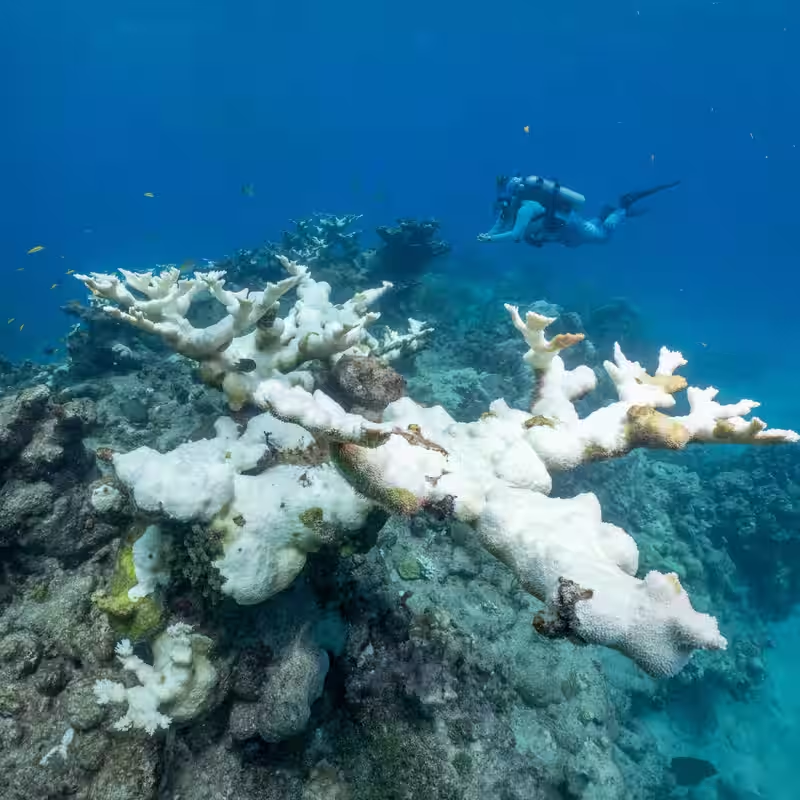Table of Contents
- Coral Crisis in Florida
- What Is Functional Extinction?
- Why Staghorn and Elkhorn Mattered
- Drivers of Decline
- Can They Be Saved?
- Sources
Coral Crisis in Florida
In a sobering announcement that signals a major ecological turning point, marine scientists have declared that staghorn and elkhorn coral are now functionally extinct in Florida’s waters. Once the backbone of the state’s reef ecosystems, these iconic corals have dwindled to such low numbers that they no longer contribute meaningfully to reef structure, biodiversity, or coastal protection.
The findings, published by a coalition of researchers from NOAA, the University of Miami, and the Florida Fish and Wildlife Conservation Commission, follow decades of decline accelerated by repeated marine heatwaves, disease outbreaks, and ocean acidification.
What Is Functional Extinction?
Functional extinction doesn’t mean every individual coral is gone—some fragments still exist in isolated pockets or in restoration nurseries. But it does mean that staghorn and elkhorn coral can no longer perform their historic ecological roles: providing habitat for fish, buffering shorelines from storms, and supporting reef growth.
“It’s like having a skeleton with no muscles,” said Dr. Lena Morales, a marine ecologist involved in the study. “The reef is still there, but it’s hollow—biologically and structurally.”
Why Staghorn and Elkhorn Mattered
For over 6,000 years, staghorn (Acropora cervicornis) and elkhorn (Acropora palmata) corals built the foundation of Florida’s coral reefs—the only living barrier reef in the continental U.S. These fast-growing, branching species once covered more than 90% of shallow reef zones from Biscayne Bay to the Dry Tortugas.
Their complex structures sheltered over 500 marine species, supported commercial fisheries worth hundreds of millions annually, and reduced wave energy by up to 97%, protecting coastal communities from erosion and storm surge.
Drivers of Decline
The collapse of these corals didn’t happen overnight. Scientists point to a cascade of stressors:
- Mass bleaching events: Record ocean temperatures in 2014, 2019, and especially 2023 caused widespread coral death.
- Stony Coral Tissue Loss Disease (SCTLD): A mysterious, highly contagious disease first detected in 2014 near Miami has killed millions of corals across the Caribbean.
- Pollution and runoff: Nutrient-rich water from agriculture and urban development fuels algal blooms that smother reefs.
- Ocean acidification: Rising CO₂ levels reduce calcification, making it harder for corals to build skeletons.
By 2025, surveys show live staghorn and elkhorn cover in Florida has dropped by over 98% since the 1970s.
Can They Be Saved?
Hope isn’t entirely lost. Restoration efforts are underway, with scientists growing thousands of coral fragments in offshore nurseries and outplanting them onto degraded reefs. The Coral Restoration Foundation alone has outplanted over 150,000 staghorn and elkhorn colonies in the Florida Keys.
But experts warn that without addressing root causes—especially climate change—these efforts may only delay the inevitable.
“We’re gardening on a burning planet,” said Dr. James Rivera, a NOAA coral specialist. “Restoration buys time, but only global action on emissions can secure a future for reefs.”
Meanwhile, Florida’s reefs are shifting toward slower-growing, less structurally complex species—altering the entire marine ecosystem in ways scientists are only beginning to understand.
Sources
The New York Times: Staghorn and Elkhorn Coral Are Functionally Extinct Off Florida, Researchers Say




